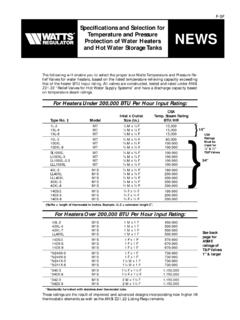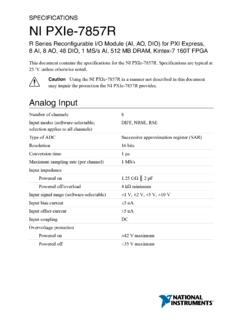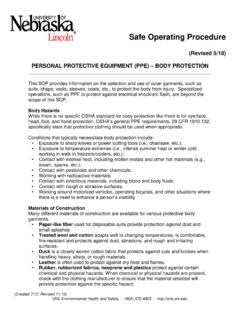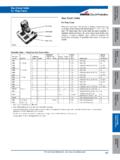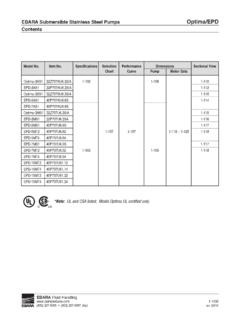Transcription of The Basics of Motor Selection - Groschopp
1 Groschopp Inc. | The Basics of Motor (fax) 420 15th St. NE, Sioux Center, IA 51250 USA Registered ISO 9001:2008 Groschopp COPYRIGHT 2016 The Basics of Motor SelectionA designer s guide to Motor types and customizationsA Groschopp , Inc. White PaperGroschopp Inc. | The Basics of Motor SelectionTABLE OF CONTENTSI. OVERVIEW ..2II. Motor Basics ..2 III. APPLICATION Input Power Source ..3B. Environment ..3C. Motor Specs ..5D. Motor Performance ..5I V. Motor TYPES ..6A. Universal Motors.
2 6B. Permanent Magnet DC Motors ..8C. AC Induction Motors ..10D. Brushless DC Motors ..12V. Motor TYPES COMPARISON ..14VI. CUSTOMIZATION ..15 VII. CONCLUSION ..16 Groschopp Inc. | The Basics of Motor Selection2 | | | OVERVIEWM otor Selection is often a complicated process that takes a lot of work with various vendors and time to sort and evaluate quotes. Groschopp engineers share knowledge and expertise about the Motor Selection process. Focusing on four broad Motor types, care is taken to meticulously evaluate the characteristics, advantages, and drawbacks of each.
3 Critical considerations include: power source, environment, Motor specifications and Motor performance. These considerations will provide designers with direction in regards to gathering the specifications for the application as well as the characteristics that each Motor possesses. With that knowledge designers can more easily match a Motor type with an application. II. Motor BASICSThe purpose of a Motor , regardless of the application, is to change electrical power to mechanical power in order to provide rotational movement.
4 Every application will have its own distinct parameters for input and output power. The diagram in Figure 1 provides a visual representation of the input and output parameters of a Motor . The input electrical power can be in the form of a DC battery, AC line voltage, rectified AC line voltage, or a wide variety of controls. Affected by application and environmental constraints along with the necessary power needed to move a load, the input power will be volts, amps, and frequency. The output power is the Motor speed and torque response required to accomplish the 1: Motor Input and Output FunctionsGroschopp Inc.
5 | The Basics of Motor Selection | 3 | | APPLICATION CONSIDERATIONS The Motor Selection process begins with evaluating the application and ensuring the Motor chosen will properly match the needs of the application. Thoughoften overlooked by design engineers, the items on the Application Considerations Checklist (Figure 2) are critical to OEM Motor design and a successful overall system solution. Using the Application Checklist to collect the application data, and then prioritizing it in order of importance will give a designer directiongoing forward with Motor Selection and system design.
6 It is important to note that each application will have its own unique performance requirements that need to be evaluated using the checklist. While the items on the Application Checklist may not be the only factors to evaluate, from Groschopp engineer s long-term experience working with OEMs, the checklist coversthe majority of application Input Power SourceDesigners should pay attention to maximum allowablecurrent early in the Selection process, as it is a consideration that oftentimes goes unnoticed.
7 For example, if an application such as a medical patient lift uses a standard electrical wall outlet as the power source, it is generally necessary to limit the currents to 15 amps to avoid overloading the electrical circuit. As mentioned previously, the input power will be a known quantity and is easy to specify in the form of voltage, current, and frequency. Some applications will have a maximum allowable current draw which needs to be closely monitored. For applications sensitive to high current draw situations, the Selection of the Motor is critical.
8 Choosing a Motor that runs at maximum efficiency at the application load point allows the designer to optimize performance to lessen current draw. If Motor optimization alone does not work, the use of a control with current limiting capabilities can also be used to minimize the issue. B. EnvironmentMost off-the-shelf motors are constructed for a clean, dry, room temperature environment. If the requirements of the project subject the Motor to elements such as dust or water contamination, a designer should consider a Motor constructed for environmentally sensitive applications.
9 To more uniformly denote industry standard gearmotor sealing, the Ingress protection (IP) chart (Table 1) was created to assist designers with selecting the proper IP rating for an application. The ingress rating of the Motor enclosure is given a number rating in the form of IPXX. The first X indicates protection against solid objects and the second X denotes protection against liquids. For example, most totally enclosed motors would meet an IP44 rating which is protection against objects over 1 millimeter and liquid spray from all Considerations ChecklistInput Power SourceVoltageFrequencyCurrent (Efficiency)Control TypeEnvironmentIngress protection (IP) RatingTemperature (indoor/outdoor) Motor SpecsSize and WeightMotor Life Expectancy / MaintenanceNoiseMotor PerformanceSpeed and TorqueStarting / Stall TorqueDuty Cycle & Load ProfileFigure 2.
10 Application Considerations ChecklistGroschopp Inc. | The Basics of Motor Selection4 | | | temperature is also an important factor to take into consideration when choosing a Motor . UL dictates maximum allowable temperatures for each insulation class (Table 2), providing designers with an understanding of how hot the winding temperature of a Motor can be at a continuous rating. For example, temperature class B means that the insulation system is designed not to exceed a maximum temperature of 130 C, if the internal Motor temperature exceeds 130 C, the Motor life will be shortened.





